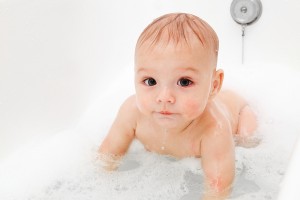 Safety at home: a few simple precautions
Safety at home: a few simple precautions
Children are fragile. They’re susceptible to a lot more illnesses than adults, tend to react more severely when they do catch something, and are easily affected by household dangers. Not to worry though, children are also resilient. A little precaution goes a long way. Here’s how to be aware of the most common household hazards and how to prevent them to create a safe, less accident-prone environment for your family.
Stairs
It’s all too easy to have a little trip down the stairs, especially if you’re a child newly-discovering the exciting world of mobility. Invest in a stairgate as one of your first safety at home measures, as soon as your kid shows the first sign of becoming mobile.
Chemical hazards
Cleaning products are necessities in most homes, but they also account for numerous accidental poisonings a year. You’ll notice that almost all of them have labels warning against ingestion. Keep these products in a locked cupboard under your sink or high out of reach and talk to your kids, particularly young ones, about the chemicals so that they know to avoid them.
Cords
Wires and extension cords are often forgotten as they snake along the floor, but when small children are present these innocuous everyday items become hazards. Unwatched, they can become a strangulation risk. Window cords are also dangerous and should be tied back away from the reach of small children.
Bathtubs
The saying is true that a child can drown in a few inches of water. Bathtubs account for a large number of yearly childhood deaths that occur in the home. Children in the tub should always be supervised by an adult. Don’t leave your kid alone while you complete a chore or answer the phone, even for a few minutes.
Children’s toys
Toys are a lot of fun and every child should have some but they should be given with caution. Beware of toys with lots of small parts. They can be ingested and cause your child to choke. Balloons, when swallowed, easily get lodged in the throat and cause complications.
This advice is not to scare you or turn you into the type of parent who keeps their kids in a bubble. The best thing to do to prevent a problem from hazards in the home is talk to you kids as they grow about what is safe and what isn’t. Avoid the potential hazards before they become a reality and enjoy practicing safety at home.
I am surprised by this post – and especially the warning on chemicals in the home.
“Cleaning products are necessities in most homes”. That doesn’t equate with cleaning products needing to be dangerous chemicals. Why wouldn’t you recommend safer cleaning options as a first line of defense – then locking away any that families feel they must have. This site usually touts most things green. My under sink latch recently broke, but I haven’t rushed to fix it because all that is under there is vinegar, baking soda and some castile soap.
Yep, it’s a guest post.
It would be ideal to make a place for them where they can play, yet they can’t get out or wander around easily. Keep an eye on your child and make sure to keep any hazardous chemicals or any thing that can hurt away from.